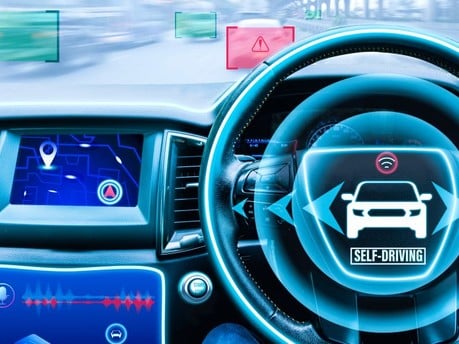The Highway Code introduces rules for self-driving cars
A future with autonomous cars could be closer than you think
It may feel like a bigger step into the future than we’re ready for, but the reality of self-driving cars has been bought closer by its inclusion in the latest update from the Highway Code 2022.
With advancements in technology making hands-off motoring possible in the not-too-distant future, consideration has had to be given to how their operation will be managed safely - for those travelling in them, and the drivers that they share the road with.
Here at Octane Finance, we explain more about self-driving cars and the recent rules introduced by the Highway Code…
How do self-driving cars work?
The concept of self-driving cars may seem a bit alien at the moment, but some driver assistance technologies are already in use in some models on the market today, and you’ll probably recognise them. For instance, Lane-keeping assistance, parking control, adaptive cruise control, and blind spot monitoring are all examples of self-driving systems within a car.
Autonomous vehicles operate like these features but on a larger scale. They use radars, light detection and ultrasonic sensors to detect hazards such as pedestrians and cyclists, understand road signs and markings, and keep all road users as safe as possible.
Whilst we’re a way off from our cars being able to operate without us completely, the idea behind autonomous vehicles is that drivers will be able to sit back and let their cars do a lot of the hard work.
What are the rules for self-driving cars?
A lot of the rules around self-driving cars relate to being able to take control of the vehicle at any time, as although the technology has been developed to reduce human error, accidents could still happen. Many of the rules are recognisable from the world of traditional motoring, and contain an element of common sense.
Here are some of the initial rules that the Highway Code has suggested will need to be observed by drivers of self-driving cars…
No handheld devices
This particular rule won’t come as a surprise, as it’s still important for those travelling in a self-driving car to not let their attention stray far from the road. Devices such as phones, tablets and laptops are still prohibited behind the wheel, as they have the potential to be very distracting, and could prevent a driver from being able to resume driving if necessary.
Be mindful of where you can and can’t drive
Whilst no official guidance has been released, it’s likely that there will be variations in where autonomous vehicles are permitted to be. This will probably be set by the manufacturer, so will differ between models. Some, for example, will only be suitable for motorways, while others will have been cleared for around-town driving.
No sleeping
The arrival of self-driving vehicles on the scene might initially seem like an opportunity for a snooze, but being aware of your surroundings is still a must, even in a self-driving car. Getting out of your seat is a no-no too - even though the car can drive itself, you should be ready to take over at a moment’s notice for obvious safety reasons.
No drink or drugs
You might have gathered by now that the emphasis is still on occupant supervision of an automated vehicle, and alcohol and drug use can seriously impair your ability to do this safely. It is very likely to still be illegal to operate an autonomous vehicle under the influence of drink or drugs, and the car definitely won’t be something you can rely on to take you home after a night out!
It’s not all a case of ‘don’t’s’
Whilst it might seem that there isn’t much difference between operating an ordinary vehicle and one with self-driving technology, there is one significant perk, the Highway Code has suggested…
Providing it’s on the car’s inbuilt infotainment screen, and that the car is in self-driving mode, it may be possible, in some cases, to watch TV and catch up on emails. It will, however, come with a caveat that you should still be able to take control of the vehicle if necessary.
How close are we to self-driving cars?
Whilst there’s nothing on the market yet that can call itself an autonomous vehicle, some manufacturers have made it known that their self-driving release will be sooner rather than later. Even the UK government has suggested that they’ll be approving self-driving technology later in the year and into 2023.
Manufacturers such as Ford and Tesla are said to have invested a lot in the development of autonomous vehicles, so we can expect to see them at the forefront of any releases. It’s likely we’ll see self-driving technology introduced as an optional extra within existing models - just like with trim levels and infotainment options.
Whatever your views on self-driving cars, there’s no denying that they’re a part of Britain’s motoring future. We’ll definitely see plenty more guidance emerge as the country gears up for their arrival on the roads, so watch this space!

